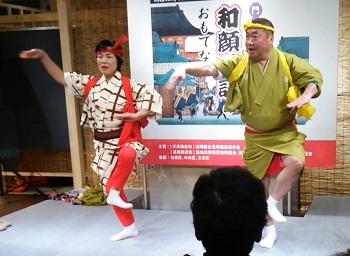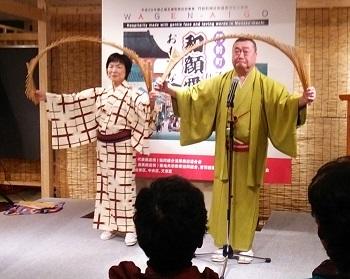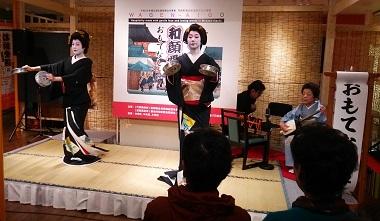On February 3, there was an event called Japanese face Aigo at Tsukiji, and I went there. The first event was the performance at Tsukiji Honganji Temple in temple town and Tsukiji Temple intemple town. "Japanese face love" means to interact with people in Buddhist terms with a gentle smile and compassionate manner. The contents include traditional acrobatics called Dai-Kagura on a special stage, rakugo, and geisha hospitality dance. In addition, there were craftsmen work experience workshops and Edo period costume experience corners.
Rakugo is a master of Tachibana Takezo. I wondered if I would like to talk about rakugo, and after talking, it was a modest and Nanjing Tama blind show. A storyteller I was impressed that various arts are wide. I was satisfied that I saw something interesting. After the stylish and hauling art, the gorgeous dance of Ningyocho Yoshicho geisha Ren was performed.
The holding of "Waka Aigo" in Chuo-ku is over, but it will be held at 2/10 Gokokuji, 2/12 Dentsu, and 2/17 Asakusa. In Chuo-ku, you can often find events where you can see the traditions and popular performing arts that have continued from Edo.
This day is Setsubun. I went back with the bean-throwing ceremony of Tsukiji Namiki Shrine.



